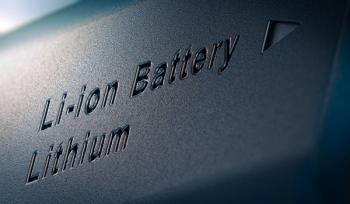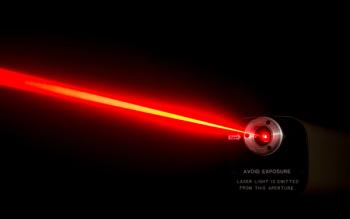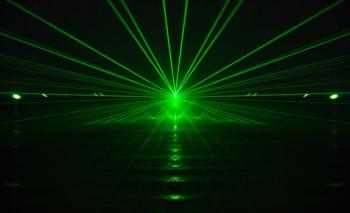
Differing grades of aluminum alloys have large differences in their composition, especially when it comes to trace elements, emphasizing the need for them to be evaluated for means of production, use, and recycling.

Differing grades of aluminum alloys have large differences in their composition, especially when it comes to trace elements, emphasizing the need for them to be evaluated for means of production, use, and recycling.

Spectroscopy plays a critical role in both macroscopic and microscopic plastics detection, which is the first step in remediation, and also in the commercial replacement of plastics with biodegradable materials. This piece provides tangible examples of efforts being made today, including details on spectral hardware implementation, but more importantly provides proposals to the reader on how they can make a meaningful difference in their own world.

Scientists from Xi’an Jiaotong University in Xi’an, China measured the effects of ablation craters on geomaterials that occur as a side effect of laser-induced breakdown spectroscopy (LIBS).

Scientists from Moscow, Russia studied the dynamics of lithium plasma under laser-induced breakdown spectroscopy using a custom system made using 3DLINE code.

A type of calcite whose name comes from a resource-rich basin in northwest China was earmarked as a promising reference material for laser ablation inductively coupled plasma mass spectrometry (LA-ICP-MS) in situ U–Pb dating.

To understand the physicochemical processes that occur during plasma expansion, scientists experimented on aluminum nitride (AlN) plasma using optical emission spectroscopy (OES).

At SciX, Johannes Pedarnig of Johannes Kepler University will be recognized as the 2023 SAS and Applied Spectroscopy William F. Meggers Award recipient. Here's a summary of the award session.

A recent investigation of the optical emission of plasma on industrial steel samples using LA-SD-OES and LIBS revealed new findings about the oxide composition of the slag layer.

Scientists from the Amirkabir University of Technology in Tehran, Iran, used laser-induced fluorescence (LIF) spectroscopy to analyze opium and hashish, in order to achieve a novel method of drug analysis.

A group of scientists in China are using LIBS technology to help accurately classify recyclable waste.

Researchers at Université Paris-Saclay have successfully employed the novel laser-induced breakdown self-reversal isotopic spectrometry (LIBRIS) technique to achieve high-resolution isotopic analysis of lithium in solid-state electrolytes for lithium batteries. The breakthrough method offers valuable insights into lithium transport mechanisms at a microscale level, holding promise for the development of safer and more efficient Li-ion batteries in the future.

Researchers have developed a sum frequency generation spectroscopy setup to characterize the output profile of an infrared free electron laser, providing valuable insight into the development of more efficient and accurate lasers.

A brief history of fiber-optic bundles helps us understand how this technology how it has evolved from use in telecommunications to enabling extraction of three-dimensional (3D) information from two-dimensional (2D) images.

A 3D printer can shorten the time to make prototype hardware for spectrometers from weeks to days—or less.

Igor Gornushkin and colleagues at BAM Federal Institute for Materials Research and Testing in Berlin, Germany studied the feasibility of using optical spectroscopy as a control method for laser metal deposition, and he recently spoke to us about this work. Gornushkin is the 2022 recipient of the Lester W. Strock Award from the New England Chapter of the Society for Applied Spectroscopy (SAS).

Controlling methane is one of the highest-impact ways to reduce climate impacts, so its accurate measurement is essential. Spectroscopy offers valuable tools for this task.

High-performance instrumentation requires many critical components. We focus here on energy sources, lasers, and detectors.

The Covid-19 pandemic has led to extraordinary developments of both testing methods and vaccines. Can spectroscopy play a role in next-generation testing for Covid and other pathogens?

Laser-induced breakdown spectroscopy (LIBS) is an ideal method for elemental analysis of geological samples, and has been used by NASA on the Mars rovers. This article details the methodology and the most successful calibration and quantification methods to date.

Uwe Karst of the University of Münster in Germany explains the use of laser ablation–inductively coupled plasma–mass spectrometry (LA-ICP-MS) imaging to provide spatially resolved quantification of trace elements in biological samples.

Uwe Karst of the University of Münster in Germany explains the use of laser ablation–inductively coupled plasma–mass spectrometry (LA-ICP-MS) imaging to provide spatially resolved quantification of trace elements in biological samples.

A frequency comb is a laser source, with evenly spaced narrow lines, potentially useful for spectroscopy applications, particularly as a source or for alignment of the wavelength axis.

Tunable diode laser absorption spectroscopy (TDLAS) is combined with an extreme learning machine (ELM) model, tailored by genetic algorithm (GA) parameter searching, to produce a more robust analytical method for trace gas analysis of ethylene.

Tunable narrowband light sources are essential for measuring fluorescence, reaction energetics, and other challenging measurements in chemical, biological, and physical systems. In particular, the optical parametric oscillator (OPO) is an indispensable tool.

New Raman spectroscopy applications are emerging in non-traditional fields because of advances in easy-to-use commercial Raman spectroscopy instrumentation. With improvements in lasers, optics, and detectors, Raman spectroscopy has developed into a powerful measurement solution for manufacturing and quality control applications.